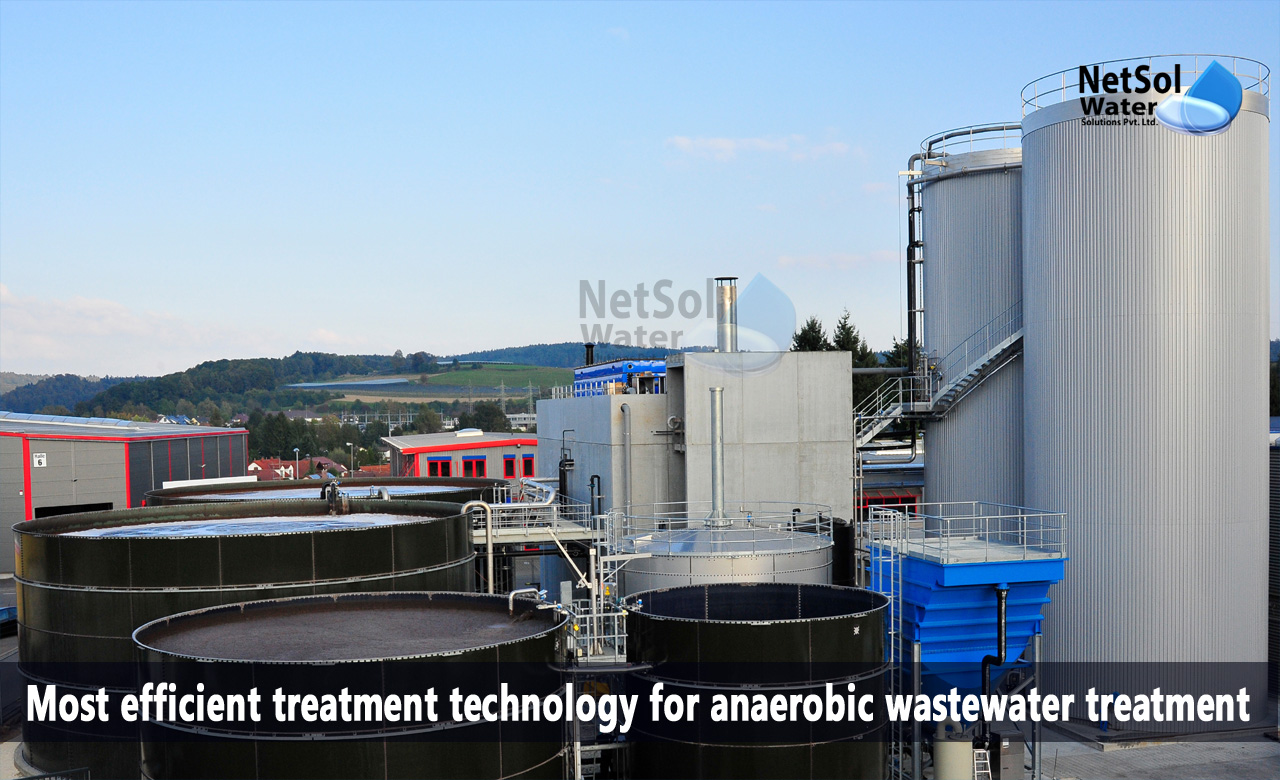Bacteria breakdown organic pollutants in anaerobic wastewater treatment, in the absence of oxygen. Water enters a bioreactor receptacle in a typical anaerobic treatment cycle. The bioreactor includes sludge, a thick, semi-solid material made up of anaerobic bacteria and other microbes.
These anaerobic bacteria, or "anaerobes," digest the biodegradable materials in the wastewater, resulting in effluent with decreased BOD, COD, and TSS, as well as biogas by-products.
Let us learn about the most effective treatment process for anaerobic wastewater treatment!
Objective of Anaerobic digestion
Anaerobic wastewater treatment is used to treat a wide range of industrial effluent streams, including agricultural, food and beverage, dairy, pulp and paper, textile, and municipal sewage sludge and wastewater. Anaerobic technologies are often used before aerobic treatment in streams, with high amounts of organic material measured as high BOD, COD, or TSS.
What are the technology used for anaerobic wastewater treatment?
Technologies for anaerobic treatment of wastewater
1- Anaerobic Lagoons
Anaerobic lagoons are massive man-made ponds that can be up to 20 feet deep, and have a surface area of 1-2 acres. They are frequently used for the treatment of agricultural wastewater from meat production, as well as the treatment of various industrial wastewater streams, and as the first stage in municipal wastewater treatment.
Typically, wastewater is routed into the lagoon's bottom, where it settles out to produce an upper liquid layer, and a semi-solid sludge layer.
Because, the liquid layer prevents oxygen from reaching the sludge layer, anaerobic digestion may break down the organic elements in the wastewater. This procedure might take as little as a few weeks, or as long as six months to get BOD/COD levels back into the desired range.
2- Anaerobic sludge blanket reactors
Sludge blanket reactors are anaerobic treatment systems that run wastewater, over a free-floating "blanket" of suspended sludge particles. Anaerobes in the sludge grow and gather into bigger granules that sink to the bottom of the reactor tank, and may be recycled for future cycles as they decompose the organic contents in the wastewater.
The treated effluent arouses and exits the unit. Throughout the treatment cycle, collecting hoods collect biogases produced by the degradation process.
Anaerobic sludge blanket reactors are available in several configurations, including:
1: Up-flow anaerobic sludge blankets (UASBs): UASB treatment involves pumping wastewater into the bottom of a UASB bioreactor with upward flow. As the wastewater passes through the sludge blanket, it floats.
2: Expanded granular sludge beds (EGSBs): EGSBs are very similar to UASB technology, with the main difference being that the wastewater is re-circulated through the system, to allow for more interaction with the sludge. They are also generally taller than UASBs, with higher-velocity influent flows. As a result, compared to UASB systems, EGSBs may handle streams with larger organic loads.
3: Anaerobic baffled reactors (ABRs): ABRs are semi-enclosed chambers separated by alternating baffles. The baffles disrupt the smooth flow of the wastewater stream, allowing it to make more contact with the sludge blanket, as it travels from the reactor entrance to the outflow.
3- Anaerobic filter reactors
Anaerobic filter reactors are made out of a reactor tank and some sort of fixed filter media. Anaerobic bacteria are allowed to colonize the filter medium, and develop what is known as a biofilm.
During treatment cycles, the wastewater stream is passed through the filter medium, which captures particles from the stream, while also providing enough surface area for anaerobes in the biofilm, to be exposed to the organic compounds present in the stream.
The performance of the filter reactor must be carefully monitored over time, as the filter media will ultimately get clogged with excess biofilm and particle accumulation, necessitating maintenance actions such as backwashing, and cleaning to maintain maximum performance.
Manufacturer of anaerobic wastewater treatment technologies
Netsol Water offers a wide range of sophisticated wastewater treatment solutions, such as water softeners, wastewater treatment plants, sewage treatment plants, RO Plants, and anaerobic technologies like UASBs, anaerobic lagoons, etc.
Netsol Water is Greater Noida-based leading water & wastewater treatment plant manufacturer. We are industry's most demanding company based on client review and work quality. We are known as best commercial RO plant manufacturers, industrial RO plant manufacturer, sewage treatment plant manufacturer, Water Softener Plant Manufacturers and effluent treatment plant manufacturers. Apart from this 24x7 customer support is our USP. Call on +91-9650608473, or write us at enquiry@netsolwater.com for any support, inquiry or product-purchase related query.



